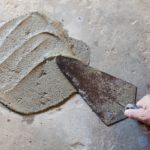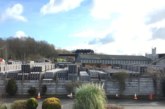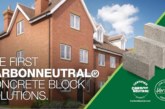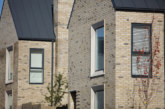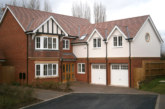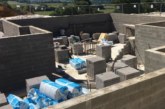Paul Lees at Tarmac explores five reasons why concrete might be the ideal material for your next residential development’s paving areas.
Concrete has seen an influx of use across the garden in recent years. Thanks to its versatility, style and cost efficiency, it’s an obvious choice for hardscape elements in landscaping projects. Here, Tarmac’s Paul Lees lists five reasons why it could be the right material for you.
Cost
An important consideration for any project is, of course, ensuring the right product is selected for the right task. Concrete is a man-made material which, when it comes to paving, makes it cheaper than other natural alternatives such as clay, granite or sandstone. Likewise, these materials can also involve costly maintenance which will affect the homeowner in the medium to long term. Concrete is therefore an increasingly popular choice for housebuilders looking to maximise their profits without compromising on the all-important design.
Flexibility
Concrete paving has become the very epitome of design flexibility in recent years. It’s now manufactured in a range of different colours and, likewise, slabs are also produced in a wide variety of different textures, offering housebuilders endless options to choose from when designing an attractive, budget friendly outdoor space.
An increasingly popular choice for patio areas is polished concrete, which involves using progressively finer grinding tools until the desired texture is reached. For these high traffic areas, it’s best to use a high-strength concrete such as Blue Circle High Strength Concrete 40N and make sure that the area is only polished up to three times to maintain a safe slip rating.
Versatility
Concrete has proven a versatile choice for an array of applications, both residential and commercial and can be mixed to a variety of different strengths, making it suitable for both smaller and larger projects. Interlocking concrete pavers are a sensible and aesthetically attractive choice for all outdoor surfaces including for driveways, car parks, paths, pavements, patios, streets and more. Its textured surface also means that it leaves the end user with a non-slip surface whether wet or dry.
As the trend for extending the living space to the outdoors continues, people are also exploring more inventive ways to use concrete in landscaping designs. For example, installing concrete furniture such as a table or worktop is a sure-fire way to infuse a stylish and alternative aesthetic into a garden area. It needn’t feel cold or too industrial, either, as concrete can complement all manner of styles and can be enhanced by complementing it with other textures.
For furniture such as concrete tables which are generally long, slender, thin beams, it’s critical to use a product with appropriate characteristics including aggregate grading, workability and strength such as Tarmac Blue Circle High Strength concrete (40N) to prevent cracking, chipping and shrinkage.
Durability
For high traffic areas such as a garden path, driveway or patio, concrete paving is a no-brainer thanks to its high strength and ability to withstand many years of consistent use. Concrete paving can, for example, stand up to extreme weathers and temperatures, including repeated thawing and freezing without affecting its intrinsic strength. In addition, it can also endure exposure to most chemicals.
Maintenance
As modern lives get busier, homeowners are always seeking low-maintenance gardens which still provide a tranquil outdoor living space. A huge benefit of using concrete for outdoor paving is that, once installed, it is easily maintained, only requiring occasional sweeping and rinsing to maintain the appearance. Should prolonged wear and tear result in the paving becoming stained, a jet wash will easily remove any engrained marks. Similarly, if there any cracks in the paving, they can be easily repaired by the homeowner using a product such as Blue Circle Extra Rapid Cement.
A solid choice?
Clearly, the creative possibilities of concrete are ever-expanding, and housebuilders have the opportunity to use concrete in original and inventive ways. Developers are increasingly aware of its benefits and are harnessing concrete for their paving projects, to create flexible and versatile designs which suit all manner of budgets and styles.

